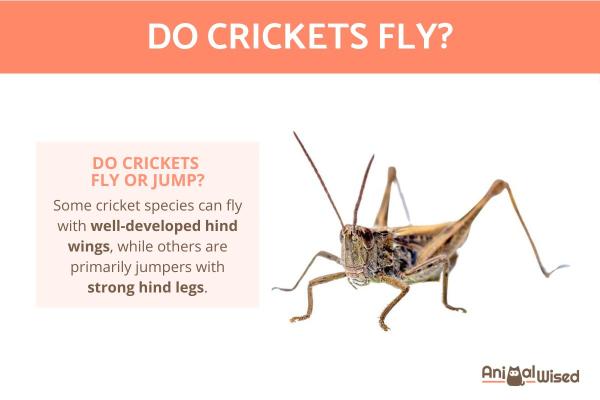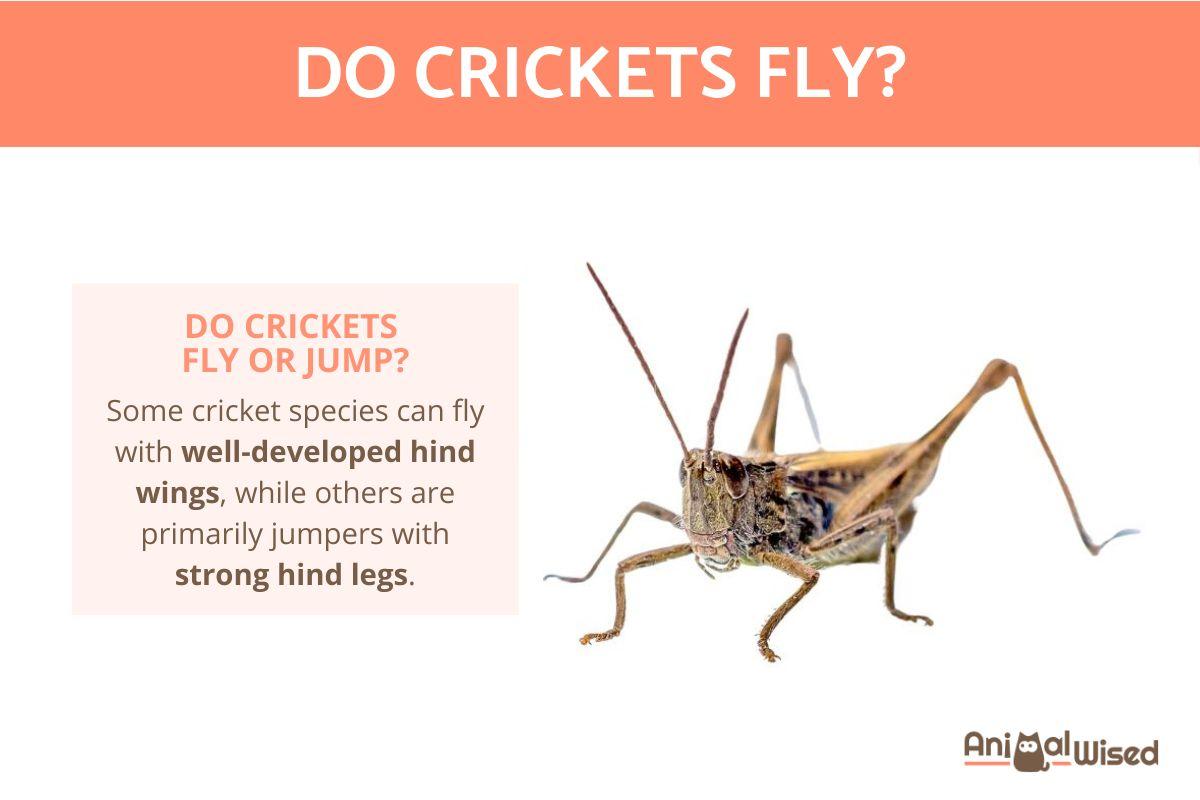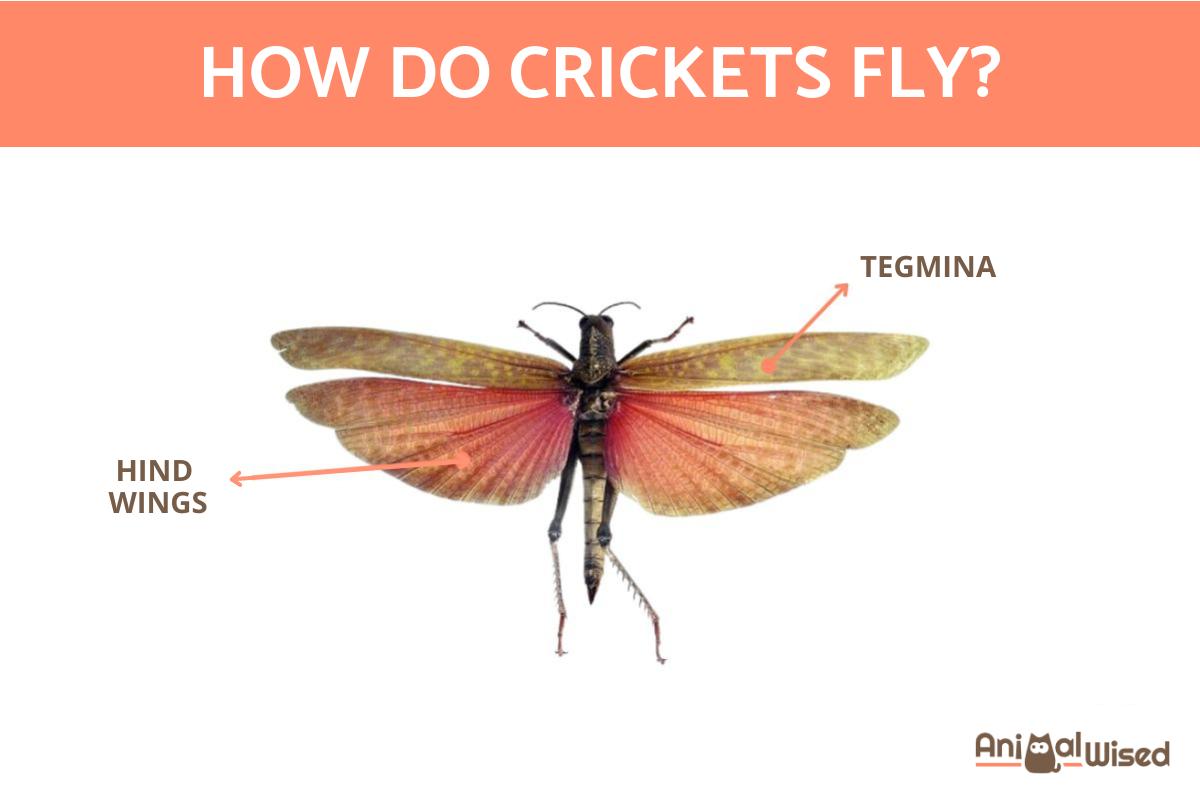How Do Crickets Fly?


Crickets are fascinating creatures that chirp their way through fields and forests around the world. Beyond their romantic evening melodies, these insects are essential to the functioning of ecosystems. They are a vital source of food for many different animals as well as decomposers, aiding in the breakdown of dead plant debris. Despite their seemingly simple appearance, they possess a complex anatomy specifically adapted for their lifestyle.
The following AnimalWised article explains whether crickets can fly, including insights into their anatomy, variations in wing development, and the factors influencing their flight abilities.
Do crickets fly?
Crickets are masters of mobility, boasting adaptations for both powerful jumps and, in some species, sustained flight. Unlike their grasshopper cousins, crickets exhibit a fascinating variation in wing development.
Flying crickets possess two pairs of wings. The upper pair, known as tegmina, are situated atop the body. These tough, leathery forewings serve as protective shields for the delicate hind wings nestled underneath. Unlike the hind wings, which are membranous and transparent, the tegmina are not designed for flight but rather function as sturdy covers. The hind wings, significantly larger than the tegmina, are the primary wings used for flight and are neatly folded beneath the tegmina when not in use.
The tegmina, composed of resilient chitinous material, serve a dual function. They provide shielding for the vulnerable hind wings while also housing specialized structures, particularly in males, known as stridulatory organs. These organs are instrumental in producing the distinctive chirping sounds associated with crickets.
How high can crickets fly?
Crickets don't typically fly for great heights. They're not known for soaring through the air. Their main purpose for flying is more for short bursts of movement, like escaping danger or reaching new territories. They likely fly just a few meters, or a handful of yards, at most.

Do crickets fly or jump?
Not all cricket species possess fully developed hind wings and are flightless. Their hind wings are either greatly reduced or completely absent.
On the other hand, there are some crickets species that rely heavily on jumping. They often have incredibly strong hind legs specifically adapted for explosive leaps. This allows them to evade predators quickly and efficiently. Interestingly, fully-winged crickets may have slightly less robust jumping legs as they invest more energy into flight muscles and wing development.
For impressive leaping ability, crickets rely on their well-developed legs. Each leg has five segments: coxa, trochanter, femur, tibia, and tarsus. The reason behind their remarkable jumping skills lies in the third set of legs, where the femur, the long thigh segment, is notably enlarged at its base. This enlarged muscle provides the explosive energy necessary for the impressive jumps that crickets are known for.
Species that benefit most from flight, like those in open environments, may sacrifice some jumping prowess for the ability to take to the air. Conversely, crickets thriving in dense vegetation or underground environments might prioritize powerful jumps for maneuverability within their habitat, even if it comes at the cost of losing flight capabilities.
The relationship between flight and jumping can even extend to cricket reproduction. In some species, wing development is linked to sex. Males, needing to travel farther in search of mates, may have more developed wings compared to females who remain closer to their hatching grounds. This highlights how wing development can be influenced by factors beyond just basic movement.
Want to learn more about the fascinating world of cricket diversity? Check out this article on different types of crickets.
Which crickets have wings?
As mentioned in the previous sections, not all crickets are capable of flight, as some species either lack wings entirely or have underdeveloped wings that prevent them from flying. However, there are indeed species of crickets that can fly. Some examples of flying cricket species include:
- House cricket (Acheta domesticus): Originating from Asia, it is now widely distributed around the world.
- Jamaican field cricket (Gryllus assimilis): Found in both North and South America.
- Sand field cricket (Gryllus firmus): Native to the United States.
- Snowy tree cricket (Oecanthus fultoni): Indeed native to North America, particularly the United States.
- Prairie tree cricket (Oecanthus argentinus): Occurs in North and South America.
- Broad-winged tree cricket (Oecanthus latipennis): Also native to the United States.
On the opposite end of the spectrum, there are cricket species that have completely lost their wings. For example, the Jerusalem cricket (Stenopelmatus longispina) is a terrestrial cricket that has adapted to a burrowing lifestyle and no longer requires the ability to fly.
There's also a middle ground where some cricket species possess reduced wings. The mole cricket (Gryllotalpa gryllotalpa) is a prime example. Their forewings are shortened, and their hind wings are significantly reduced, rendering them flightless. These adaptations allow them to burrow efficiently through underground tunnels. This variability in wing development highlights the remarkable adaptability of crickets.
How do crickets fly?
Crickets showcase a remarkable diversity in their flight capabilities. Unlike a uniform approach, these insects exhibit a fascinating range of wing development. Some species have entirely ditched wings, becoming dedicated ground dwellers. Others sport only the hardened tegmina, the front pair. Still others possess both pairs, but with the hindwings reduced, making them flightless.
The key to flight lies in the hindwings. For a cricket to truly take off, these membranous wings need to be fully developed and appropriately sized, often exceeding the length of the tegmina. This allows for the generation of lift necessary for sustained flight. Here's the gist of how cricket flight works:
- The cricket spreads its wings out wide, creating a larger surface area for catching air.
- Powerful muscles in their hind legs push them upwards, generating the initial lift.
- They beat their wings rapidly to propel themselves forward and stay airborne. Cricket flight isn't the most graceful, but it's enough to get them where they need to go.
It's interesting to note that crickets tend to rely more on jumping and running for movement. They might use flying for escaping danger, reaching new territories, or getting to light sources at night.
Interestingly, there seems to be a trade-off between flight and egg-laying capabilities. Species with reduced wings, or those that lose their flight ability as they mature, might have a higher reproductive output.
Ever wonder how grasshoppers and crickets differ? Dive into this article to learn all about it.
If you want to read similar articles to How Do Crickets Fly?, we recommend you visit our Facts about the animal kingdom category.
- Aguirre, A.; Barranco, P. (2015). Order Orthoptera . Available at: http://sea-entomologia.org/IDE@/revista_46.pdf
- Britannica, T. Editors of Encyclopaedia (2024). Cricket . Encyclopedia Britannica. https://www.britannica.com/animal/cricket-insect
- Orthoptera Species File . (2024). Available at http://orthoptera.archive.speciesfile.org/Common/entry/Login.aspx?Logo=1






